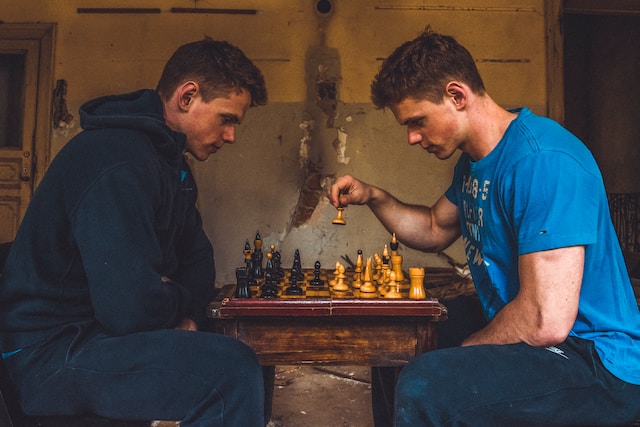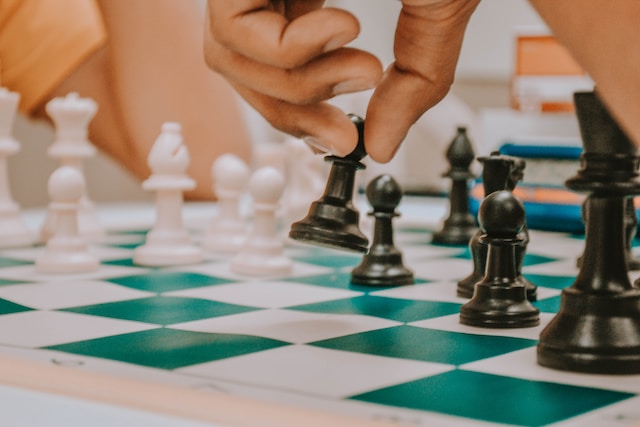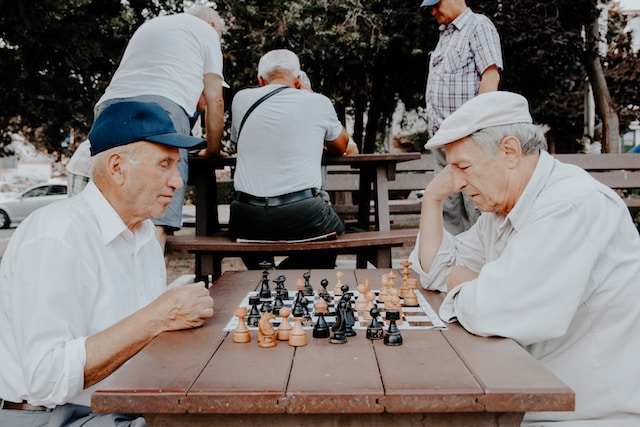In the intricate game of chess, victory is not always the ultimate goal. Sometimes, a well-executed draw can be just as satisfying, leaving opponents stunned and your strategic prowess on full display. But how does one maneuver the pieces to achieve a draw?
In this article, we delve into the intriguing world of chess draws, uncovering the techniques, tactics, and mind-bending strategies that will empower you to turn the tables on your opponent and forge a tie when victory seems elusive.
What is a draw in chess and why is it a valuable outcome?
A draw in chess occurs when neither player can checkmate their opponent’s king, resulting in a tie. While victory is often the coveted outcome, a draw holds immense value in the world of chess.
It signifies a hard-fought battle where both players showcased their strategic prowess, resulting in a deadlock on the board. A draw demonstrates the ability to hold one’s ground and strategically navigate complex positions, earning the respect of fellow chess enthusiasts and highlighting the depth and beauty of the game.
When is the perfect time to consider aiming for a draw?
Recognizing the perfect moment to aim for a draw is a skill that can elevate your chess game to new heights. It requires a keen understanding of the position, the opponent’s strengths and weaknesses, and your own capabilities.
Consider aiming for a draw when you are facing a stronger opponent who has a significant advantage or when the position is incredibly complex, with no clear winning path for either side. By opting for a draw at the opportune moment, you can salvage a challenging situation, gain valuable experience, and preserve your standing in the game.
Which piece combinations are ideal for creating a balanced position?
Creating a balanced position in chess is essential when aiming for a draw. Certain piece combinations can help you achieve this equilibrium on the board. For instance, bishops of opposite colors, when carefully deployed, can create a harmonious balance where neither side can gain a significant advantage.
Similarly, knights and pawns, strategically placed, can reinforce each other’s positions, forging a sturdy defense. By understanding the dynamics of different piece combinations, you can strive for a harmonious equilibrium and increase your chances of securing a draw against formidable opponents.
How can you turn a losing position into a draw?

Transforming a losing position into a draw requires ingenuity and resourcefulness. When faced with adversity, seek opportunities for counterplay and tactics that can disrupt your opponent’s plans.
Look for tactical tricks, unexpected sacrifices, and hidden tactical possibilities that could turn the tables on your opponent. Additionally, staying calm and composed, and patiently exploiting any mistakes or oversights made by your opponent can help you level the playing field and secure a remarkable draw from what seemed like an inevitable defeat.
What are the most effective defensive tactics to secure a draw?
In the quest for a draw, employing effective defensive tactics can prove to be a game-changer. Prioritize piece coordination and control over crucial squares to deny your opponent any breakthroughs.
Utilize tactical maneuvers such as pins, skewers, and deflections to create counterplay and force your opponent to defend. Building solid pawn structures and fortifying your king’s position can also thwart your opponent’s advances. By masterfully executing these defensive tactics, you can resist the opponent’s onslaught and secure a well-deserved draw.
Is it possible to force a draw against a stronger opponent?
Surprisingly, it is indeed possible to force a draw against a stronger opponent in chess. While it may seem daunting, strategic play combined with tactical creativity can level the playing field.
Exploit the weaknesses in your opponent’s position, create complex and challenging situations, and employ surprising tactical shots that force perpetual checks or perpetual threats. By meticulously capitalizing on your opponent’s mistakes and maximizing the potential of each move, you can defy the odds and compel a stronger opponent to accept a draw.
What are the psychological aspects to consider when aiming for a draw?
Aiming for a draw in chess goes beyond the realm of moves and tactics; it encompasses the psychological aspects of the game. Consider the mindset of your opponent and their attitudes towards drawing.
Gauge their risk tolerance, their desire for a win, and their ability to handle pressure. By understanding the psychological dynamics, you can manipulate their decision-making process, create psychological tension, and introduce unexpected complexities to the game.
Skillful navigation of these psychological aspects can tilt the balance in your favor and increase the likelihood of achieving a draw.
How can you use the pawn structure to your advantage in seeking a draw?

The pawn structure in chess holds tremendous significance, especially when seeking a draw. Strategic pawn play can help you create solid defensive positions, restrict your opponent’s piece mobility, and establish a firm foothold on critical squares.
By maintaining a balanced pawn structure, you can neutralize your opponent’s threats and make it difficult for them to break through your defenses. Additionally, pawn breaks and pawn sacrifices can disrupt your opponent’s plans, leading to tactical opportunities and potential draw-worthy positions.
Are there specific opening strategies that facilitate a draw?
While most opening strategies are geared towards achieving a win, there are specific approaches that can facilitate a draw. Some openings, such as the Berlin Defense in the Ruy Lopez, are renowned for their solid and drawish nature.
These openings focus on establishing a stable position with minimal imbalances, making it challenging for either player to gain a decisive advantage.
By familiarizing yourself with these draw-oriented openings and their corresponding plans, you can navigate the early stages of the game with the intention of reaching a balanced position and increasing the likelihood of securing a draw.
What are some surprising drawing opportunities in the endgame?
The endgame, with its reduced material and heightened tactical possibilities, harbors surprising drawing opportunities that can astonish both players and spectators alike. Seemingly dire situations can be transformed into draws through astonishing tactical finesse.
Techniques like perpetual checks, stalemates, fortress-like positions, and even zugzwang, where any move leads to a disadvantage, can abruptly shift the game’s trajectory. By staying vigilant and harnessing your creativity, you can uncover hidden resources, turn the tides, and snatch victory from the jaws of defeat, leaving your opponent marveling at the unexpected draw.
Can sacrificing material lead to a favorable draw?
Sometimes, the path to a favorable draw demands bold sacrifices. Sacrificing material strategically and purposefully can disrupt your opponent’s plans, dismantle their positional advantages, and introduce chaos into the position.
Such sacrifices can lead to imbalanced positions where the opponent’s advantage is nullified, creating chances for tactical counterplay and drawing opportunities. By daringly parting with material to upset the balance and create complications, you can showcase the power of resourcefulness and ingenuity in seeking a favorable draw.
How can you exploit your opponent’s weaknesses to steer towards a draw?

Exploiting your opponent’s weaknesses with precision and finesse is a key strategy to steer towards a draw. Identify vulnerabilities in their pawn structure, positional weaknesses, or uncoordinated pieces. By targeting these weaknesses, you can create imbalances in the position, force your opponent into defensive mode, and disrupt their strategic plans.
Probing for tactical opportunities, executing well-timed attacks, and putting pressure on their weak points can unnerve your opponent, leading them towards accepting a draw or making critical errors that pave the way for an unexpected equalizer.
What are the most common mistakes to avoid when pursuing a draw?
When pursuing a draw, it is crucial to steer clear of common mistakes that can jeopardize your chances of achieving your desired outcome. One common pitfall is becoming overly passive and defensive, allowing your opponent to dominate the position without offering any meaningful resistance.
Additionally, premature simplification of the position can inadvertently release the pressure on your opponent, giving them an advantage instead. Neglecting tactical opportunities and failing to adapt to changing circumstances can also hinder your quest for a draw. Stay vigilant, strike a balance between defense and counterplay, and avoid complacency to maximize your chances of securing the draw you seek.
Are there any historical games that showcase exceptional drawing techniques?
The annals of chess history are replete with awe-inspiring games that showcase exceptional drawing techniques. From the legendary struggles of World Chess Champions to the masterpieces created by brilliant grandmasters, these games demonstrate the artistic nature of the draw.
One notable example is the “Immortal Draw” between Adolph Anderssen and Jean Dufresne in 1852, where tactical brilliance on both sides culminated in a spectacular draw. Exploring these historical games not only offers entertainment but also provides valuable insights into the intricacies of drawing, enabling you to expand your repertoire of techniques and enrich your chess understanding.
How can studying famous draws improve your overall chess skills?
| Aspect | Strategy | Advantages |
|---|---|---|
| Timing | Aim for a draw when facing a stronger opponent or in complex positions | Preserves your standing, gains experience, and avoids potential losses |
| Defensive Tactics | Piece coordination, controlling critical squares, and tactical maneuvers | Thwarts opponent’s advances, establishes a solid defense, and creates counterplay |
| Exploiting Weaknesses | Identify opponent’s vulnerabilities and target them strategically | Disrupts opponent’s plans, creates imbalances, and induces defensive play |
| Endgame Opportunities | Perpetual checks, stalemates, fortresses, and zugzwang | Surprising tactics to shift the game’s trajectory and secure an unexpected draw |
| Sacrificing Material | Bold sacrifices to upset the balance and create complications | Neutralizes opponent’s advantages, introduces chaos, and opens avenues for counterplay |
Studying famous draws serves as a treasure trove of knowledge, offering profound benefits to improve your overall chess skills. By delving into these remarkable battles, you gain exposure to diverse strategic concepts, tactical patterns, and endgame techniques.
Analyzing the resourceful defensive maneuvers, positional subtleties, and inventive drawing ideas employed by renowned chess players expands your arsenal of ideas and techniques.
Moreover, studying famous draws fosters a deeper appreciation for the artistry and complexity of chess, inspiring your own creativity and providing valuable lessons that can be applied to future games. Embrace the wisdom and inspiration found in famous draws, and watch your chess skills soar to new heights.
Closing thoughts
In the enthralling world of chess, the art of drawing holds its own allure and significance. As we have explored the various facets of achieving a draw, from understanding its value to leveraging tactics, psychology, pawn structures, and historical examples, we have discovered that drawing is not a sign of weakness, but rather a testament to strategic prowess, resilience, and the ability to navigate complex positions.
By embracing the art of the draw, we expand our understanding of the game, sharpen our skills, and elevate our overall chess proficiency.
So, whether it’s turning a losing position into a draw, exploiting our opponent’s weaknesses, or studying famous draws for inspiration, let us embark on this fascinating journey of mastering the art of drawing in chess, where victories may be elusive, but the triumph lies in the hard-fought equilibrium on the board.




